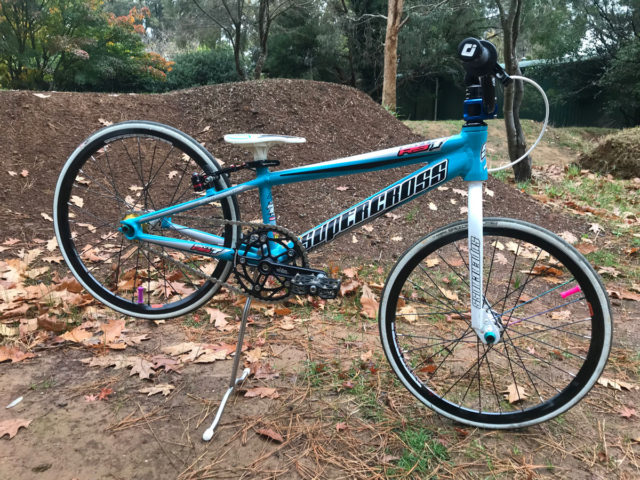Explaining BMX Gear Charts
Have you ever seen a BMX gear chart and wondered what all the numbers mean? Have you wondered how to tune your gearing to make it slightly harder or easier to pedal? Well you have come to the right place.
But first let’s break it down to the basics.
The most common BMX gear charts are measured in gear inches. Gear Inches are used to give a numerical value to how a particular front chainwheel, rear cog and tire combination will feel.

Classic BMX gearing evolved over the years to be 44/16 on most pro sized 20″ BMX bikes, which works out to approximately 55 gear inches.
The most popular gear ratios are pretty close to a 55 inch, which just seems to feel best for most people.
The number is derived from a simple formula:
(teeth on front chainring / teeth on rear cog) X rear tire diameter in inches.
So the most common gearing in BMX for the past 10 or so years would be
(44/16) X 19.92 (Tioga Powerblock 20 x 1.75)
(2.75) X 19.92 = 54.78
Change the front chainwheel to a 43 and see the difference
(43/16) X 19.92 (Tioga Powerblock 20 x 1.75)
(2.6875) X 19.92 = 53.53

The tire diameter may very from manufacturer to manufacturer or even tire model to tire model for any standard size. For example a common 20 x 1.75″ tire is generally considered to have a tire diameter of 19.5″. But let’s compare the Tioga Powerblock (19.92″) to a Maxxis DTH (19.48″), both are 20 x 1.75 in size but look at the difference in the measured diameter.
What this means is you can also adjust the gear inches by changing just the tire.
(44/16) X 19.48 (Maxxis DTH 20 x 1.75)
(2.75) X 19.48 = 53.57
If you compare that to a 43/16 with a Tioga Powerblock 20 x 1.75 it’s almost the same yet all that’s changed is the tire.
Does your gearing feel too hard to accelerate off the start hill? It could be that it’s geared too hard. Consider swapping your front sprocket to a tooth or two less and see if that helps. Alternatively you could find a smaller rear tire. Perhaps changing from a 20 x 1.75 to 20 x 1.6 might do the trick.
If it feels too easy then yes you add a tooth or two depending on how much of a change you need, or consider going to a larger tire.
Does this calculation apply to all wheel sizes? It sure does, but don’t worry, you aren’t expected to know all the tire sizes, we have done all the heavy lifting for you in our gear calculator.

When changing your gearing consider the track as a whole, it may be great to get out in front off the gate, but it only matters what you finish across the finish line.
There can be quite a lot of trial and error, and changing your gearing won’t make up for poor technique. If you are not sure, be sure to ask a more experienced rider, perhaps a BMX coach can guide you in the right direction.
Check out the free bmxultra.com gear calculator to see what might work for you. It already has measurements for a lot of the most common tires in BMX racing and covers all gear combinations and tires sizes.
Posted in: News




